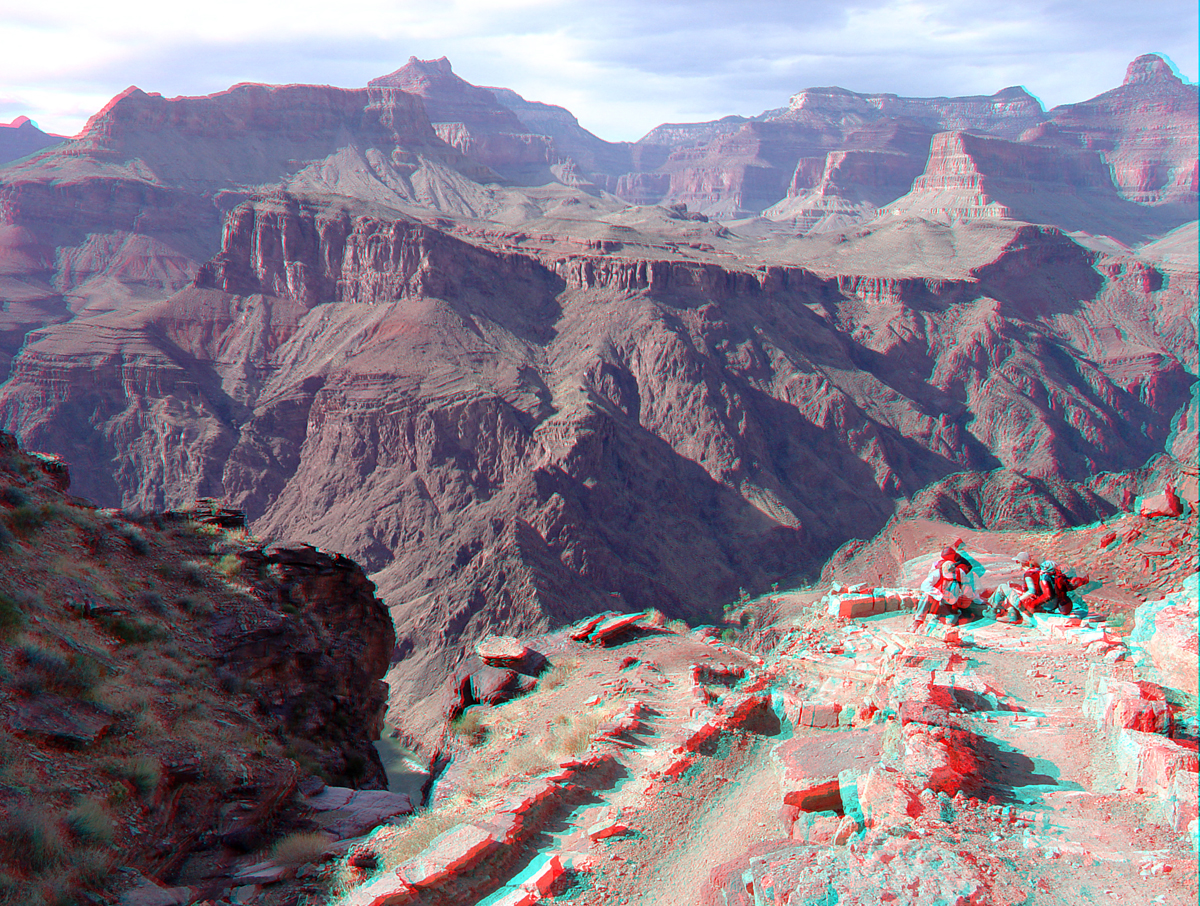
The Tipoff is the location where the South Kaibab Trail begins its descent into the Inner Gorge. This image provides a view of two ancient erosional unconformities in the lower Grand Canyon: the Greatest Angular Unconformity and the Great Unconformity. On the opposite of the Colorado River, crystalline Vishnu Basement Rocks (mostly schist in this view) are exposed in the Inner Gorge. These crystalline rocks have been determined to be about 1700 million years old, having formed from preexisting rock through processes associated with metamorphism at mid-crustal depths and melting associated with igneous intrusion before later being uplifted and exposed to erosion. The Greatest Angular Unconformity is above the Vishnu Basement Rocks and below the stratified rocks of Precambrian age. In late Precambrian time, between about 1200 and 1100 million years ago, sediments accumulated when shallow seas covered this region that is now part of Arizona. In this view, ancient sedimentary rocks are part of the Unkar Group which include the Bass Formation (dark, ledge-forming beds, mostly limestone), the Hakatai Shale (red shale slope), and Shinumo Quartzite (massive, cliff-forming rock that forms the promontory). This sequence of Precambrian-age sedimentary rocks are visible to the left of the center of the image. In the eastern Grand Canyon, lava flows (the Cardenas Lava) and other younger Precambrian-age sedimentary deposits are also preserved. In this view, the Great Unconformity is on top of the Shinumo Quartzite and above it the Cambrian-age Tapeats Sandstone (about 525 million years old) forms a thin cap on top of the promontory (Beus, 1990; Billingsley, 2000; Billingsley and others 1997; Mathis and Bowman, 2005).